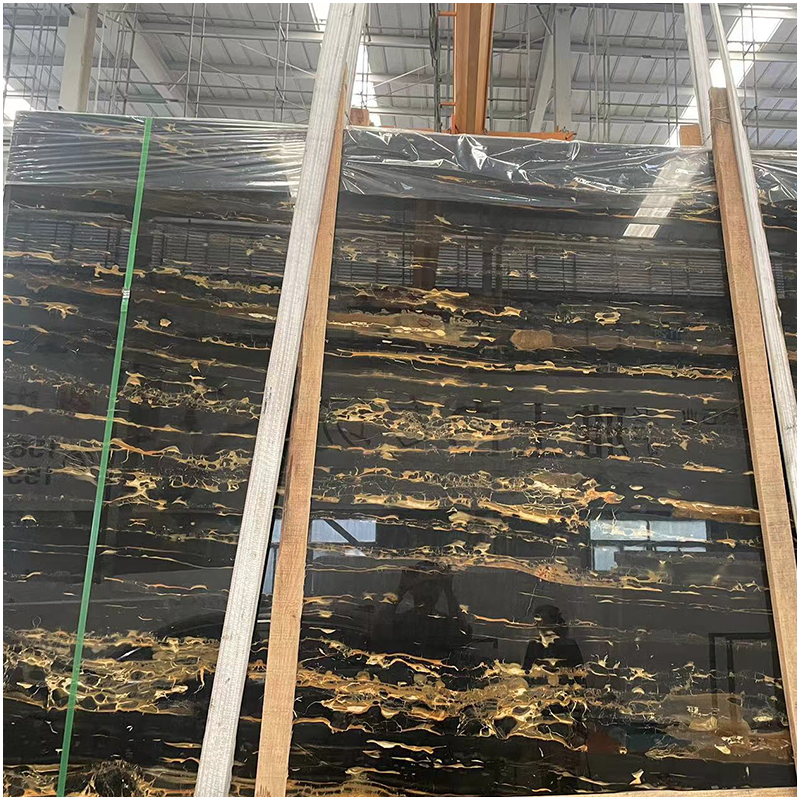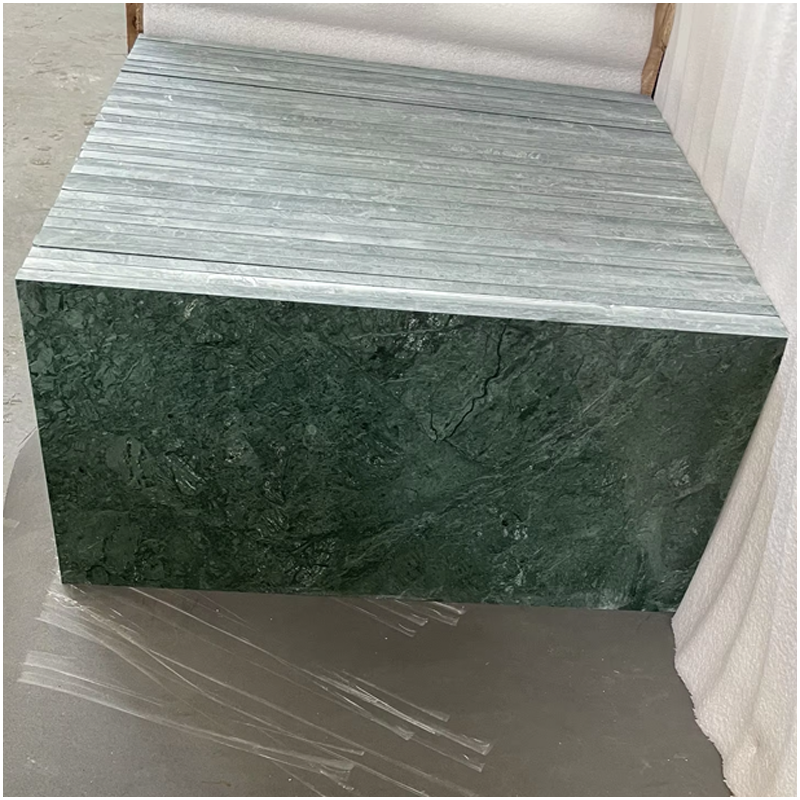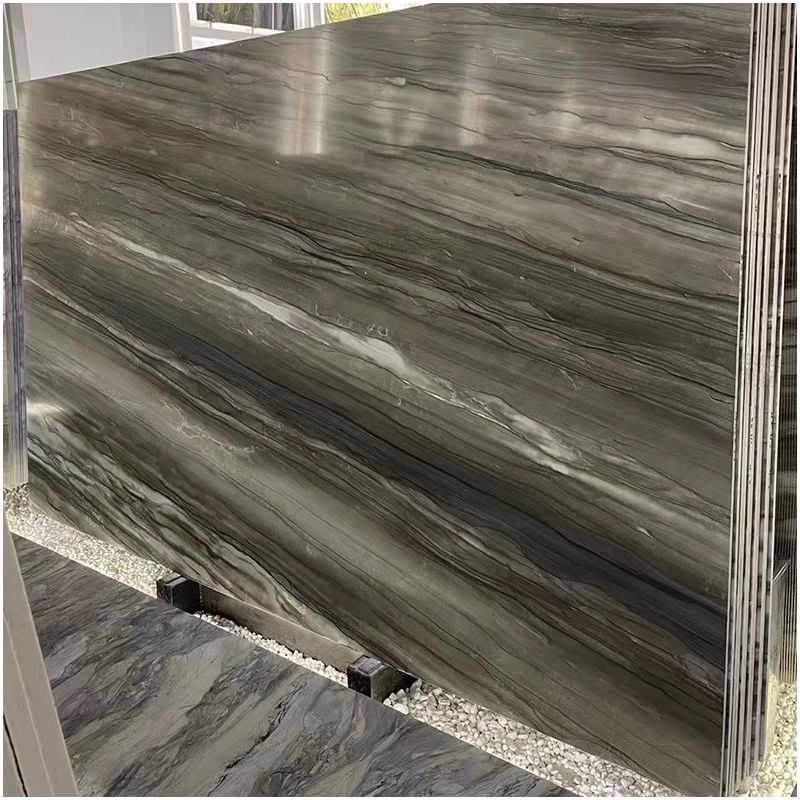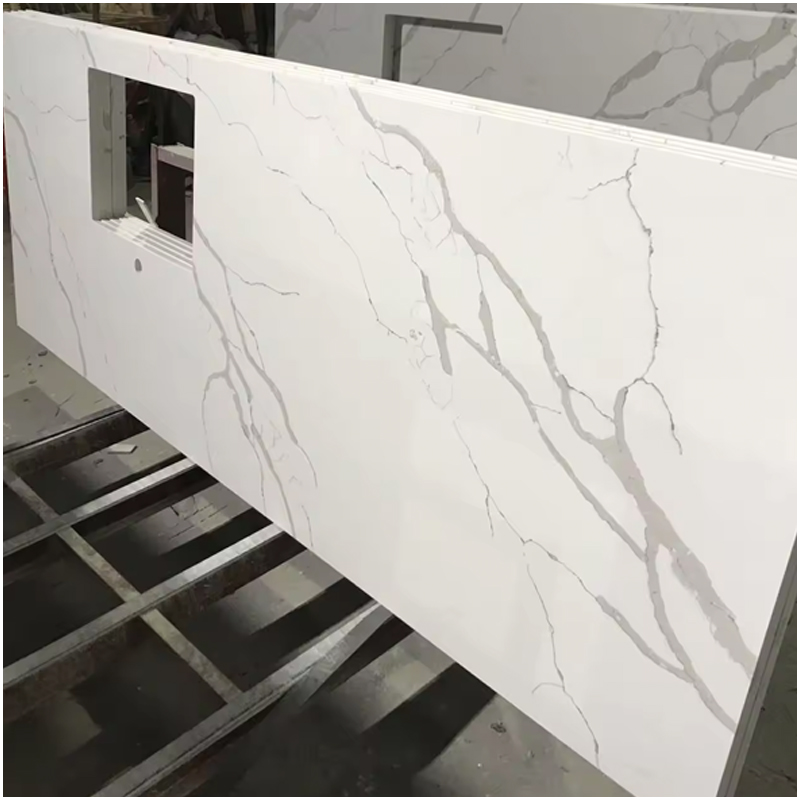How is travertine created?
As a natural stone, travertine is mostly composed of calcium carbonate and its associated minerals gradually precipitating under the action of groundwater. Usually, this cycle takes millions of years. Travertine development is interdependent from the surroundings. Many travertines develop under the combined influence of many elements including water erosion, geological changes, and climatic change. This gives every piece of travertine unique history and culture.
The water movement not only removed dirt and pollutants but also modified the limestone during the production of travertine, therefore producing the porous structure we know today. Travertine is quite famous in the domains of building and décor because of its unusual construction.
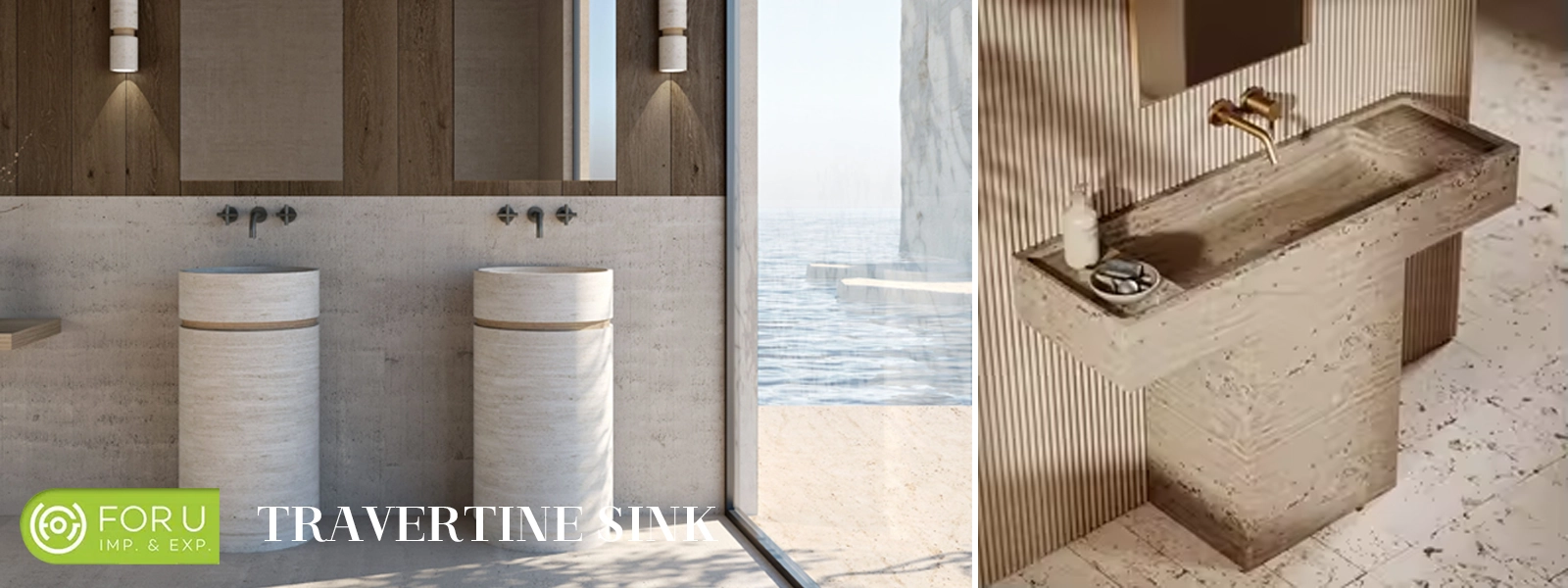
Travertine characteristics
1.Travertine colour
Travertine comes in off-white to light grey, dark brown, and even turquoise tone stones. This colour shift lets travertine become a focus in the area and accentuate the surrounding decorating in many settings. Travertine’s colour will display many layers in sunlight especially, which will create a warm and serene environment. Whether it is contemporary minimalism, rural style, or traditional retro, the natural colour of travertine may be simply blended to offer individuality and taste to the space at the same time with different decorative styles.
2. Travertine’s benefits
Travertine comes with several benefits. It is ideal for outdoor paving first because of its great weather and wear resistance. Second, travertine is suited for humid conditions, has quite low water absorption, is not prone to water seepage issues. Furthermore, its distinctive colour and texture make every piece of travertine distinctive, therefore enhancing the natural beauty of both indoor and outdoor surroundings. More significantly, travertine is really easy to maintain; frequent cleaning and good care will help to keep it lustre, hence minimising customer difficulty during usage. Travertine’s environmental protection qualities also help to explain its increasing popularity nowadays in accordance with contemporary people’s quest of sustainable development.
3. Disadvantages of travertine
Travertine has several drawbacks even if has numerous benefits. For instance, certain travertine has quite poor hardness, so heavier things may easily damage it. Extra attention might be needed in very busy places. Furthermore, improper handling of the surface may cause it to fade and wear; hence, while selecting and utilising travertine, particular care and maintenance should be given. It is advised to examine its particular purpose when selecting travertine and pick appropriate colours and designs thus extending the service life of travertine. Concurrent with this, frequent waxing and cleaning of the travertine surface will help to avoid stain collection and maintain its optimum state.
4. Artificial travertine
Artificial travertine has emerged on the market to solve some of the flaws of genuine travertine. Usually, artificial travertine is made from resin and stone powder. For customers who want for high cost performance, it offers greater performance in strength and wear resistance and can replicate the texture and colour of real travertine in look. Artificial travertine can be produced under control, so many homogeneous products may be given quickly to satisfy the demands of big-scale projects. Furthermore, artificial travertine gives customers more options as it is more versatile in design and may be tailored in a range depending on market need.
Application of Travertine
1. Outdoor Utilisation
Mostly in the following ways, Travertine is utilised outside:
Landscape
Travertine may be utilised as paving stones, flower bed borders, and waterscape accentuation in landscape design. Its natural look blends well with the nearby vegetation to provide a harmonic natural surroundings. Travertine may provide a distinctive creative environment to the garden and improve the quality of the whole landscape whether it is employed as a route paving or a waterscape accentuation. Furthermore, travertine’s natural texture may draw visitors in great attention and turn into a centrepiece of the picturesque location.
Ornamental ornamentation on the outside walls
Travertine is a popular external wall design element among architects. It may improve the building’s look and raise its lifetime as well. Travertine’s varied colours and textures allow it to fit many architectural design philosophies. Travertine, in either contemporary or classical form, may be elegantly incorporated and exhibit unusual appeal. Travertine also provides strong thermal insulation, which may help to lower construction energy consumption and improve living comfort.
Ground levelling
Ground paving has also extensively included travertine. Public areas and courtyards would find it perfect because of its anti-slip and wear-resistant qualities. Travertine may provide a safe walking surface for both a residential garden and a business plaza. Travertine’s varied forms and sizes let designers employ it adaptably to produce a range of ground effect designs. Furthermore, the natural tones of travertine may provide outdoor areas a feeling of cosiness and tenderness.
2. Applications indoors
Travertine has also many uses in interior design:
wall embellishment
To accentuate the richness and beauty of a living room, dining room, or other area, travertine may be utilised for wall decorating. Every wall radiates a different creative mood and generates a pleasant environment because of its distinctive texture. Travertine walls also enhance living comfort and help to efficiently absorb noise. Travertine walls may also exhibit beautiful light and shadow variations under the lighting of lights, therefore creating a mystery about the house.
kitchens counters
Apart from offering a strong workstation, a natural beauty to the kitchen is added by using travertine as a kitchen countertop. Its heat resistance guarantees safer cooking. Simultaneously, the porous nature of travertine may also somewhat stop bacterial growth, hence maintaining kitchen hygienic conditions. Furthermore, the distinctive texture of travertine may give the kitchen character and become a focus when cooking.
bathroom decoration
Travertine may be utilised for shower room flooring and walls in the bathroom. The bathroom is safer and more pleasant as it has high anti-slip effect and moisture absorption capability. Its natural texture could provide the bathroom a refined ambiance. Furthermore, travertine’s water resistance helps it to function well in humid surroundings, which may help to stop mould from growing and maintain the bathroom sanitary conditions.
Travertine selection and maintenance tips
You may weigh travertine’s colour, texture, and size in your choice. Travertines vary in their features. Selecting a stone that fit your house design and requirements is rather crucial. It is advised to investigate further on the product quality and reputation of the provider before making a purchase. Simultaneously, decide to buy via official methods to guarantee the materials’ environmental conservation and authenticity. Finding the most affordable travertine by comparing many parties will enhance the perfect impact of the décor.
Travertine should be cleaned and maintained with a moderate detergent; strong acid or alkaline detergues should not be used. Its surface will remain fresh and smooth if you clean it with a gentle cloth or sponge. Simultaneously, consistent application of stone protecting agent will improve its surface anti-fouling capacity. Furthermore take care not to collide with large things to prevent harm to the stone. Apart from prolonging the service life of travertine, regular care helps to preserve its attractive look.
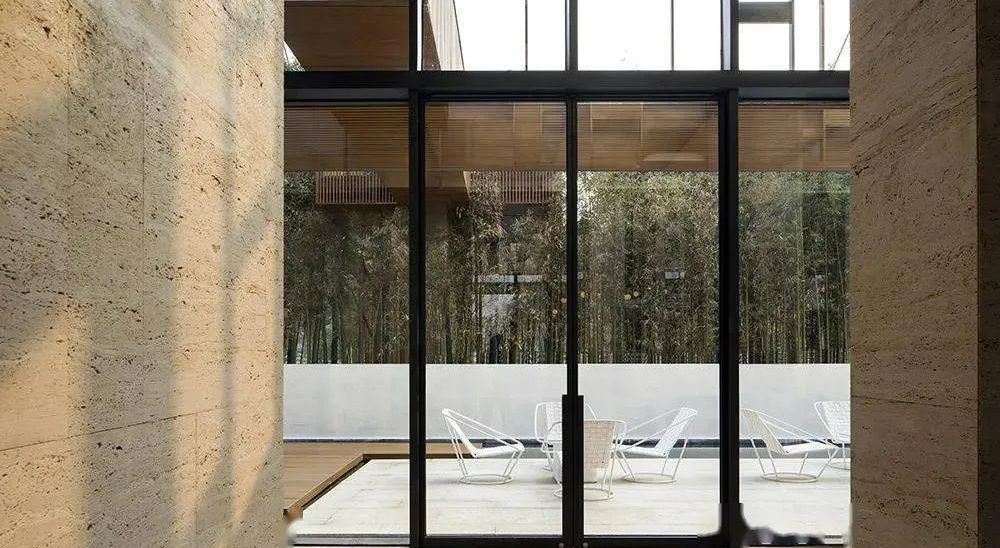
Travertine: the ideal fusion of art and landscape
Travertine is becoming more and more preferred by people as a natural, eco-friendly, durable, attractive material because of its special qualities and many applications techniques. Travertine can provide our living area a natural beauty and elegance whether inside or outside. Travertine may provide our house decorating long-lasting beauty and useful value by means of proper selection and care. Travertine will always be essential in future building and design and keep its special function in people’s life.
Frequencies of Questions
Is travertine appropriate for humidity?
Indeed, because of its superior drainage and anti-slip qualities, travertine is appropriate for humidity. It is appropriate for places like bathrooms and kitchens and may help to stay dry and efficiently prevent moisture buildup.
How much travertine costs?
Travertine’s price changes according on the material, supplier, and processing technique. Travertine is often less costly than other natural stones overall. Depending on their need and budget, consumers may choose from appropriate solutions.
Travertine’s comparison with other materials
Travertine performs well in durability and is more natural and ecologically friendly than other materials. Its special colour and texture enable the design choices to be more varied and satisfy the requirements of many styles.
How one should handle travertine’s damage?
Small cracks may be handled using a specific stone repair adhesive; if damage is more severe, it is advised to consult experts. Frequent maintenance and inspection help to greatly lower damage risk.
Does travertine need particular care?
Travertine doesn’t call for particular care. Its attractiveness may be maintained by regular washing and avoidance of harsh acidic products. Appropriate upkeep will prolong its natural beauty and service life.

